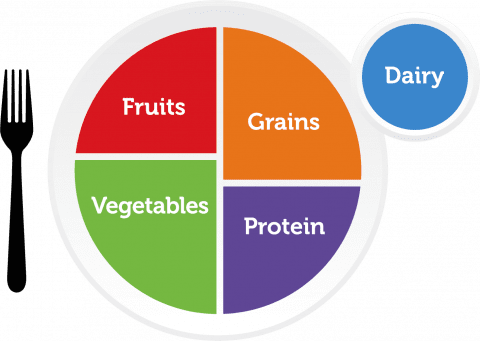Why Eat Nutrient-Rich?
One simple way to start working towards a healthier eating routine is by focusing on nutrient-rich foods. Choosing nutrient-rich or nutrient-dense foods helps you maximize your nutrition. The benefits of a diet focused on these foods are numerous. It can support weight loss and heart health, benefit your gut health, and help keep you from getting sick. But possibly best of all, it can help reduce inflammation in the body, allowing you to feel your best while reducing your risk for chronic diseases.What is a nutrient-dense food?
The term “nutrient-dense” refers to foods that carry a high amount of nutrients like vitamins, minerals, and fiber in relation to the number of calories. Examples include whole grains, fresh or frozen fruits and vegetables, nuts, seeds, lean meat, and seafood. Ever hear someone describe a food as having "empty calories"? This is one way people describe foods that are the opposite of nutrient-dense, like soda, chips, and candy.Because nutrient density is relative, it is best illustrated by comparing two foods. One example is a slice of white bread compared to a slice of whole wheat bread. These two very similar foods have very different nutrient profiles. The wheat bread is high in fiber and naturally occurring vitamins compared to the white bread made with refined flour that was stripped of these nutrients in processing. Generally, nutrient-dense foods are minimally processed and have little added sodium, sugar, or fat.
Below is a table of some popular foods paired with more nutrient-dense alternatives.
| Calorie-Dense | Nutrient-Dense |
|---|---|
| Chicken nuggets | Grilled chicken breast, baked fish |
| French Fries | Baked potato wedges |
| Coffee cake, danish, or muffin | Whole-grain toast, whole-wheat bagel with cream cheese |
| Canned peaches or fruit cocktail in syrup | Fresh fruits & berries: apples, blueberries, grapes, melon etc. |
| Chips, crackers (made with white flour) | Whole-grain crackers with hummus, roasted nuts, popcorn, kale chips |
| Sugary breakfast cereal | Oatmeal with a drizzle of honey, quality whole-grain cereal |
| White rice | Brown rice or quinoa |
| Regular pasta | Whole-grain pasta or veggie noodles |
| Store-bought salad dressing | Homemade dressing: olive oil + acid (vinegar or lemon juice) + seasoning |
| Milk shake or ice cream | Fruit smoothie with low-fat milk or dairy alternative |
| Sour cream | Greek yogurt |
| Soda or fruit juices | Sparkling water, plain tea or coffee |
Not all Processed Foods are Created Equal
While many highly processed foods such as boxed mac-n-cheese and frozen dinners do not carry a high nutritional value, it’s important to note that some processed foods are very nutritious, convenient, and affordable. Processing simply means that a food has been altered during preparation. You even process food to an extent by cooking it.
A few examples of nutrient-dense, processed foods include chopped bagged lettuce, microwavable brown rice, dried beans, and low-sodium canned vegetables. A few questions you can ask yourself when comparing foods to make the best choice for you include:
- How many ingredients are there? Can I pronounce all the ingredients?
- Is sugar or refined flour listed in the top 3 ingredients?
- How much sodium, saturated fat, and added sugar is there per serving?
If there is a long list of ingredients or high amounts of saturated fat, sodium, or added sugar, odds are that this food product isn’t a very nutritious choice. Of course, it is okay to splurge on your favorite foods and treats occasionally! Balance is the key.
Getting Started
Changing your diet doesn’t have to happen overnight. Identify places in your current routine where you can make a nutrient-rich swap. Replace one soda each day with sparkling water or chop up some crisp veggies to replace the chips or pretzels in your lunch. Have fun and experiment by trying new foods. Pick up a vegetable you’ve never tried before and search online for recipes to use it in. Gradually, you can improve your nutrition and may even find that you have less digestive discomfort or more energy.
Helpful Tools & Resources
Looking to add some value to your plate? Below are some tools and resources to help you get started.





